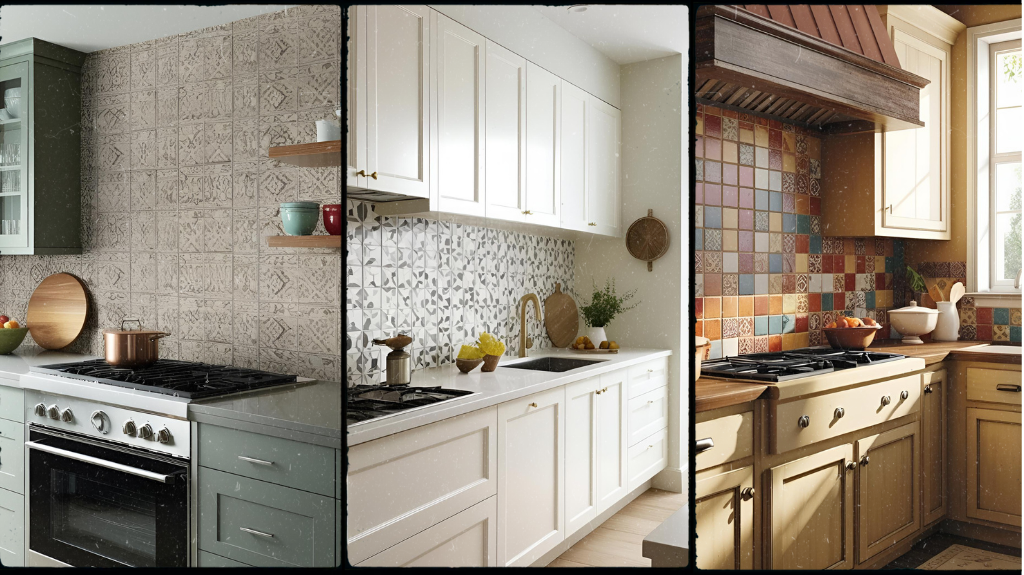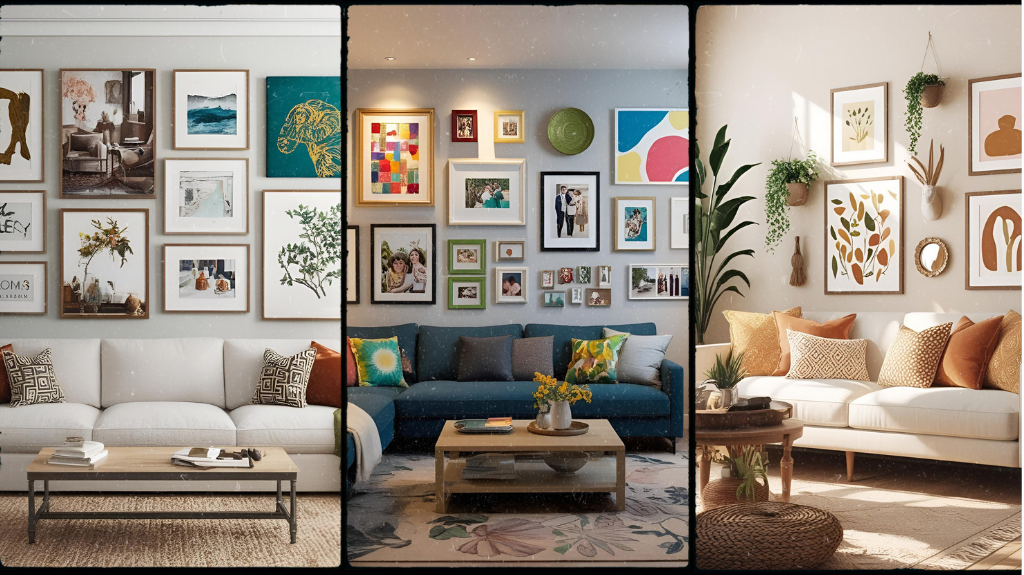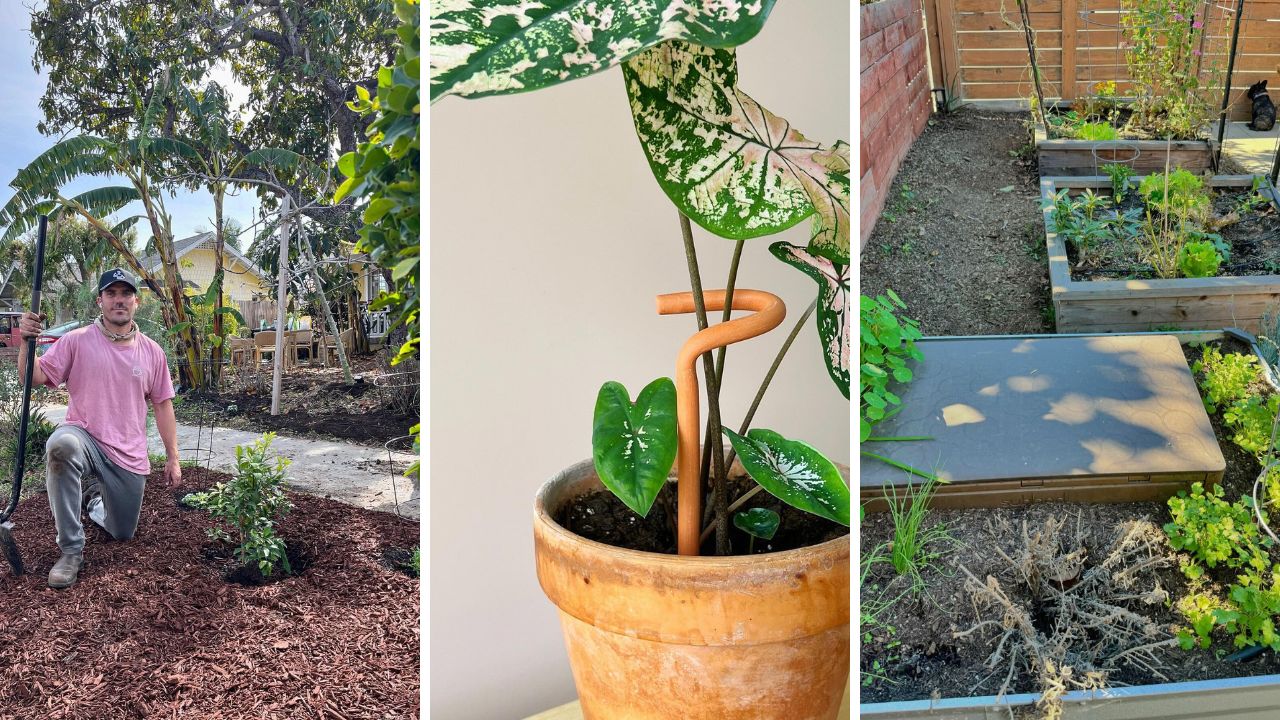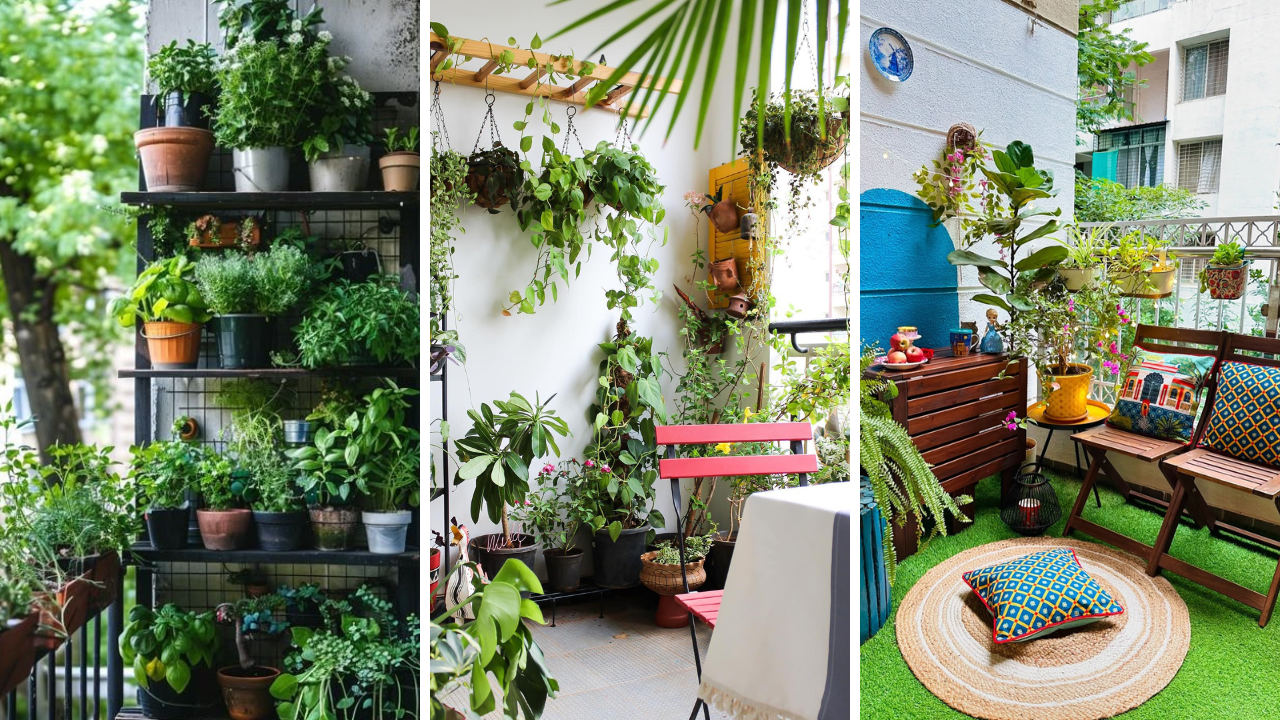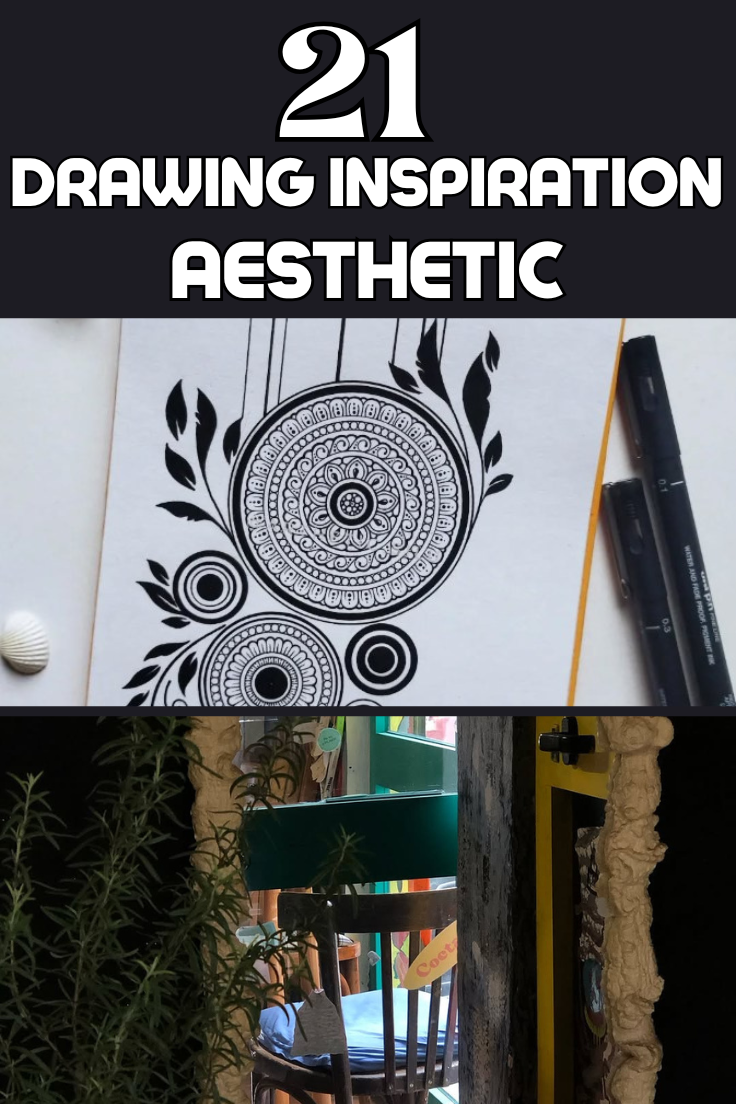
Drawing is more than just putting pencil to paper—it’s an expression of creativity, emotion, and vision. But even the most talented artists sometimes feel stuck, uninspired, or in need of a fresh perspective. If you’ve ever found yourself staring at a blank page, unsure where to begin, this guide is here to help. From creative environments to must-have tools, these 21 aesthetic hacks will reignite your artistic inspiration and elevate your drawings. Whether you’re a beginner or a seasoned artist, these tips will bring new energy to your creative process. Plus, we’ve included some Amazon product recommendations to enhance your artistic experience.
1. Create a Cozy and Inspiring Art Space

source @createartindy
Your surroundings significantly impact your creativity. A messy, uninspiring space can block your ideas, while a well-designed, cozy art corner can invite inspiration. Set up a dedicated drawing area with soft lighting, calming colors, and minimal distractions. Consider adding artwork that motivates you, plants that bring a fresh atmosphere, and a comfortable chair that allows you to sit for long hours without discomfort. A warm-toned LED desk lamp, like the TaoTronics Adjustable LED Desk Lamp, can provide the perfect lighting while preventing eye strain.
2. Use High-Quality Sketchbooks and Paper
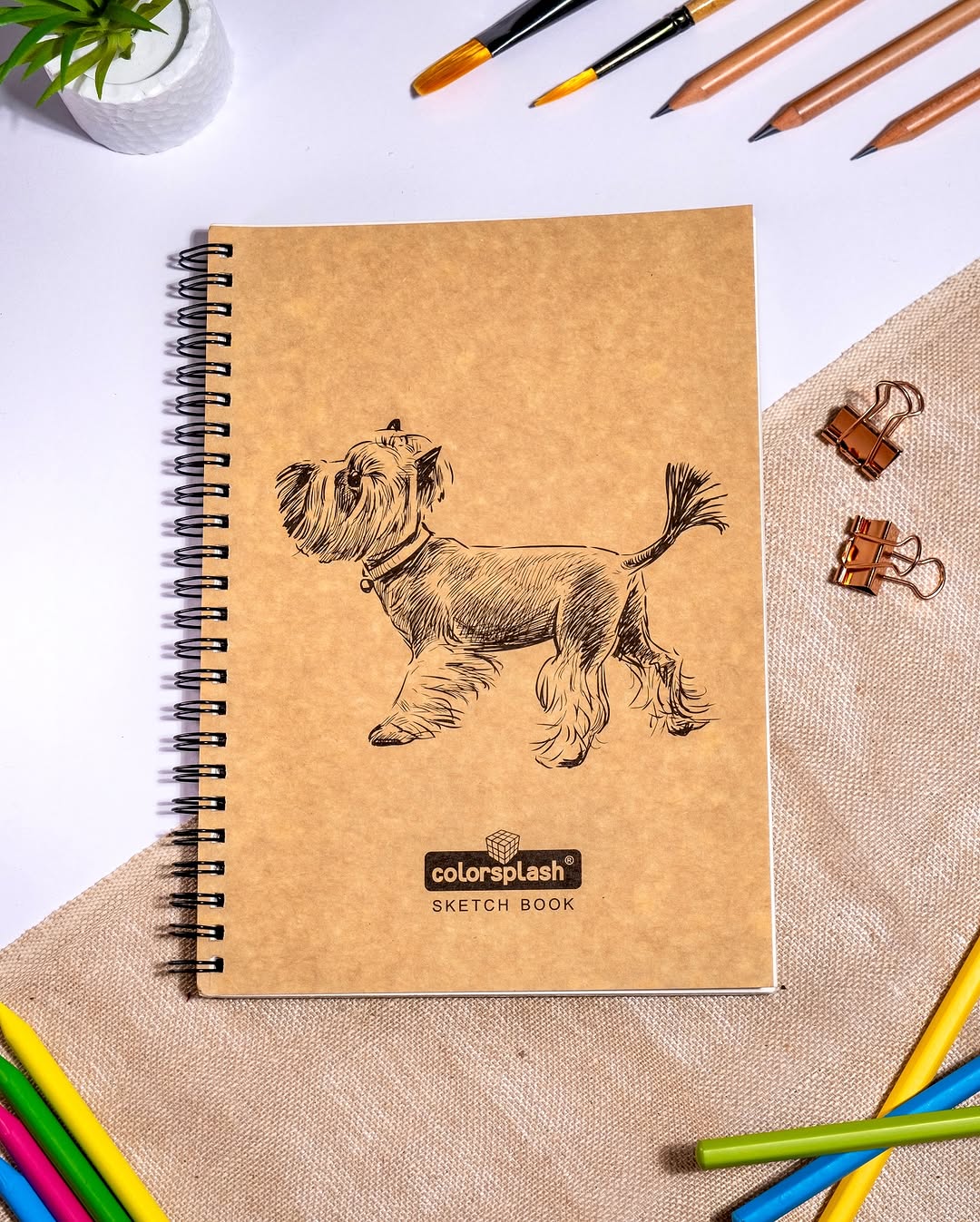
source @team_colorsplash
The paper you use matters more than you think. Cheap, thin paper can cause smudging, bleeding, and an overall unpleasant drawing experience. Investing in a high-quality sketchbook can make all the difference in how your work turns out. The Moleskine Art Sketchbook is a fantastic choice, offering thick, smooth pages that can handle various mediums, from graphite to ink. Having a quality sketchbook also makes your artwork feel more valuable, encouraging you to take your craft seriously.
3. Try Unique Drawing Tools
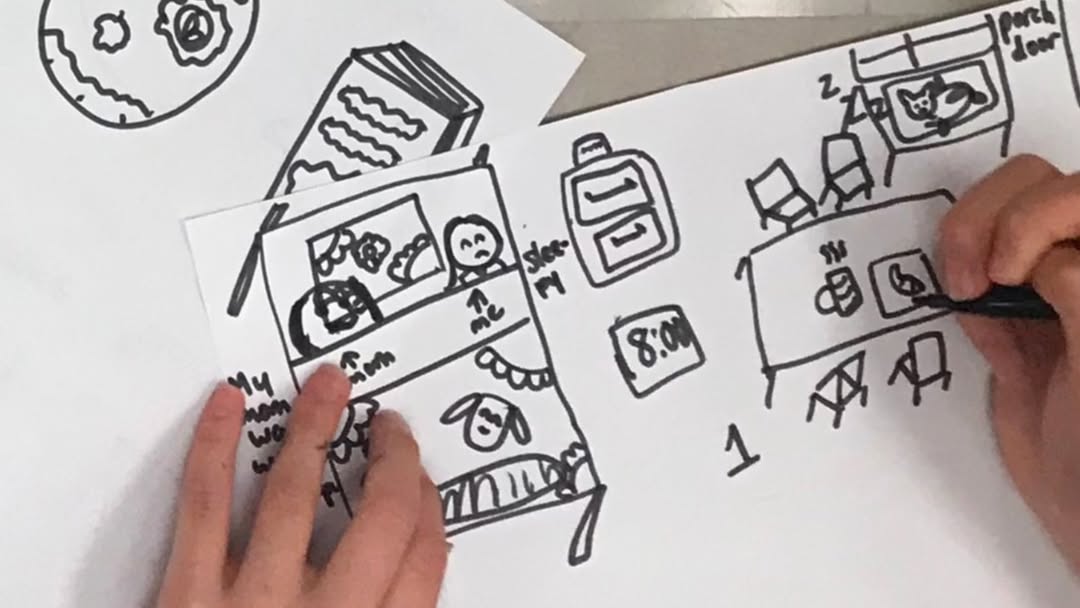
source @manuelherrera33
Sometimes, a fresh perspective comes from using fresh tools. Instead of sticking to your usual pencils, try experimenting with different art supplies like charcoal, watercolor pencils, or brush pens. Unique tools bring different textures and strokes, making your work more dynamic. The Prismacolor Premier Colored Pencils provide a rich, vibrant experience that can transform your drawings. Adding variety to your toolbox allows you to step out of your comfort zone and discover new techniques.
4. Experiment with Different Art Styles
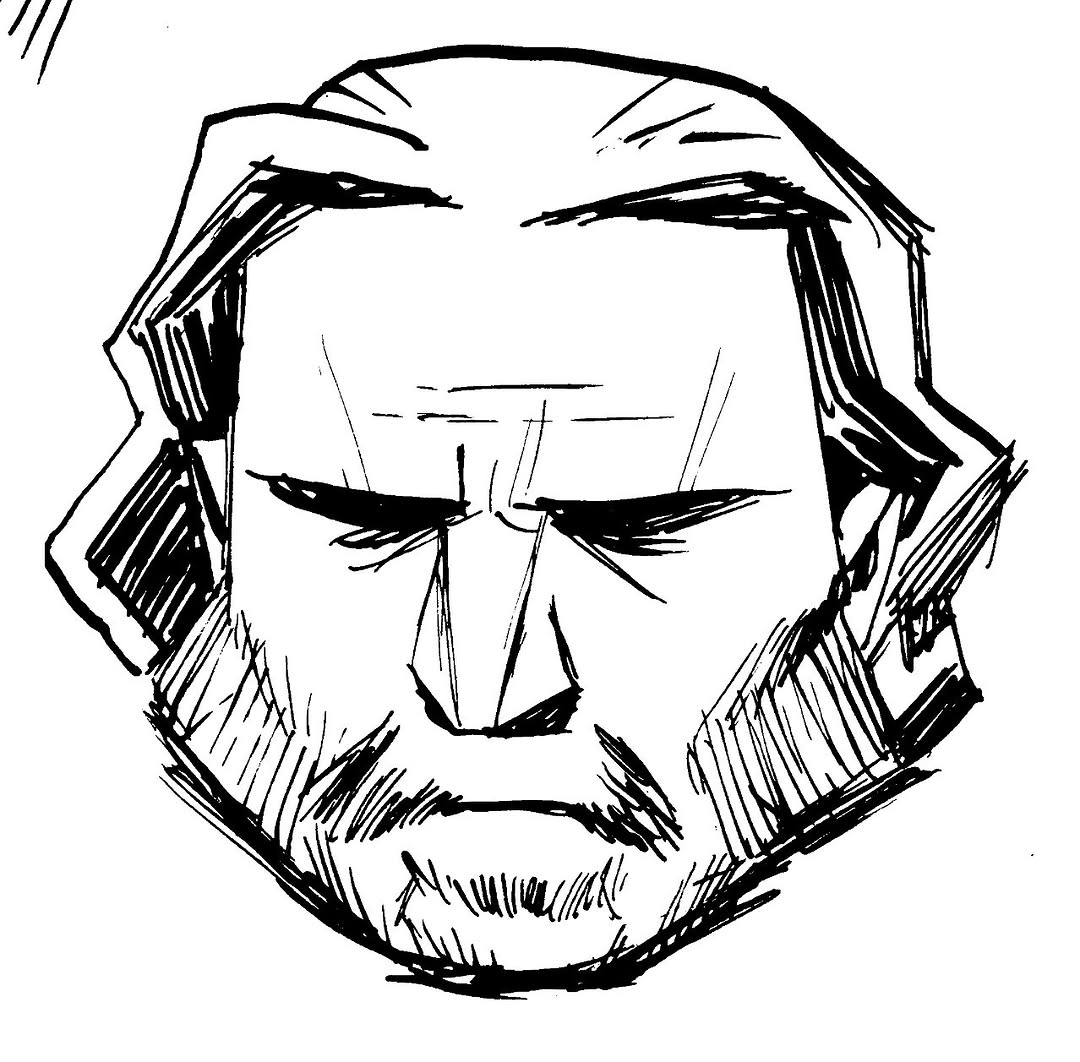
source @chadsell01
If you find yourself constantly drawing in the same style, it might be time to challenge yourself. Trying different art styles—such as minimalistic line art, manga, surrealism, or impressionism—can help you see your drawings in a new light. Every style has unique elements that can broaden your skills and improve your artistic perspective. Learning from various styles can also help refine your artistic voice by blending different influences into something uniquely yours. If you usually work with realism, why not try abstract art for a change? Breaking out of your artistic routine can reignite your passion and expand your creativity.
5. Curate a Visual Mood Board
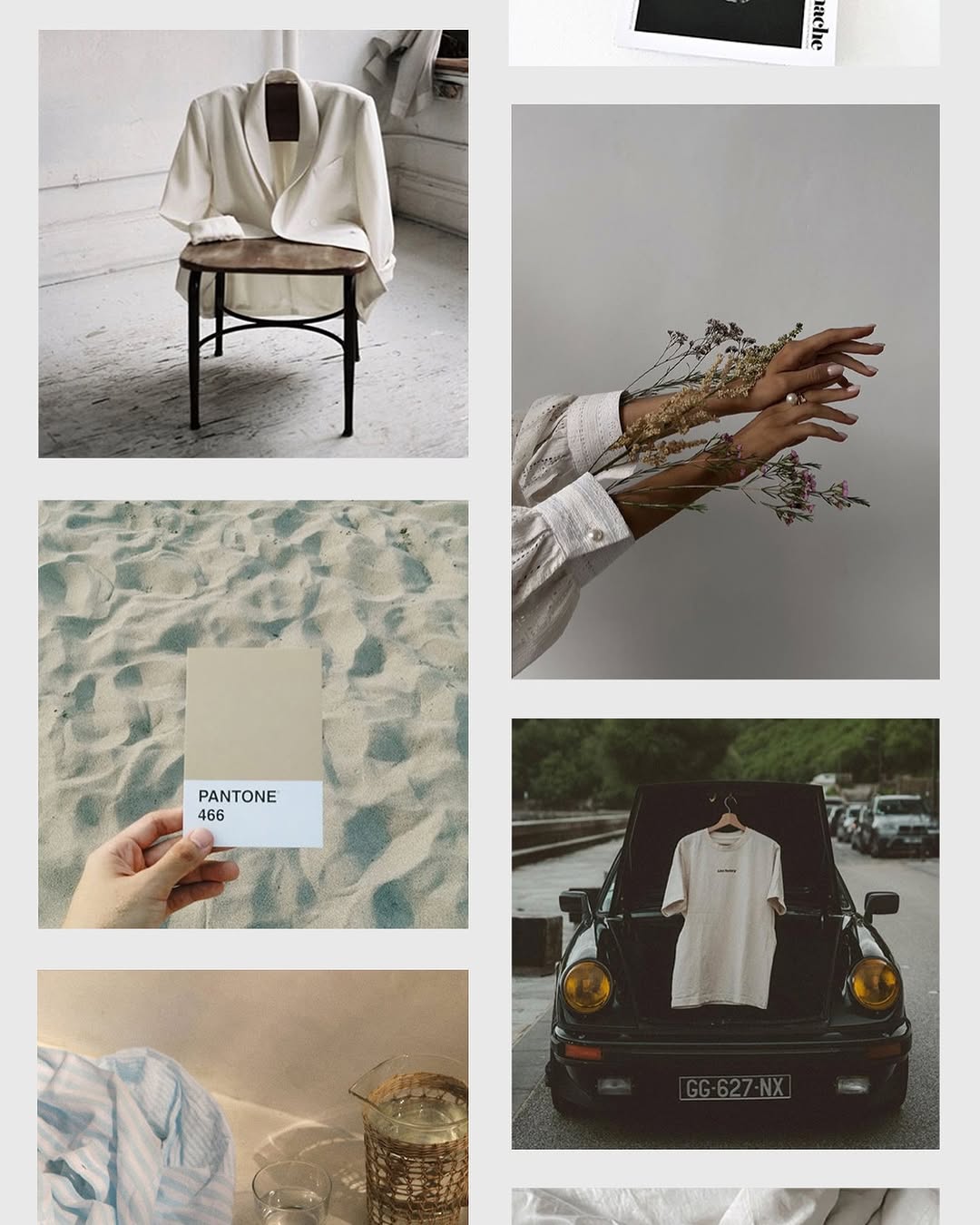
source @curated_hues
Surrounding yourself with inspiration can have a powerful impact on your creativity. A visual mood board is a great way to collect ideas, themes, and aesthetics that resonate with you. You can create one physically using a corkboard and magazine cutouts or digitally using Pinterest or Canva. Fill it with color palettes, patterns, textures, and artwork that inspire you. The more you engage with artistic visuals, the more likely you are to translate them into your own drawings. Having a mood board also helps when you’re feeling creatively drained—it serves as a go-to source of inspiration when you need a fresh spark.
6. Sketch Daily to Build Consistency
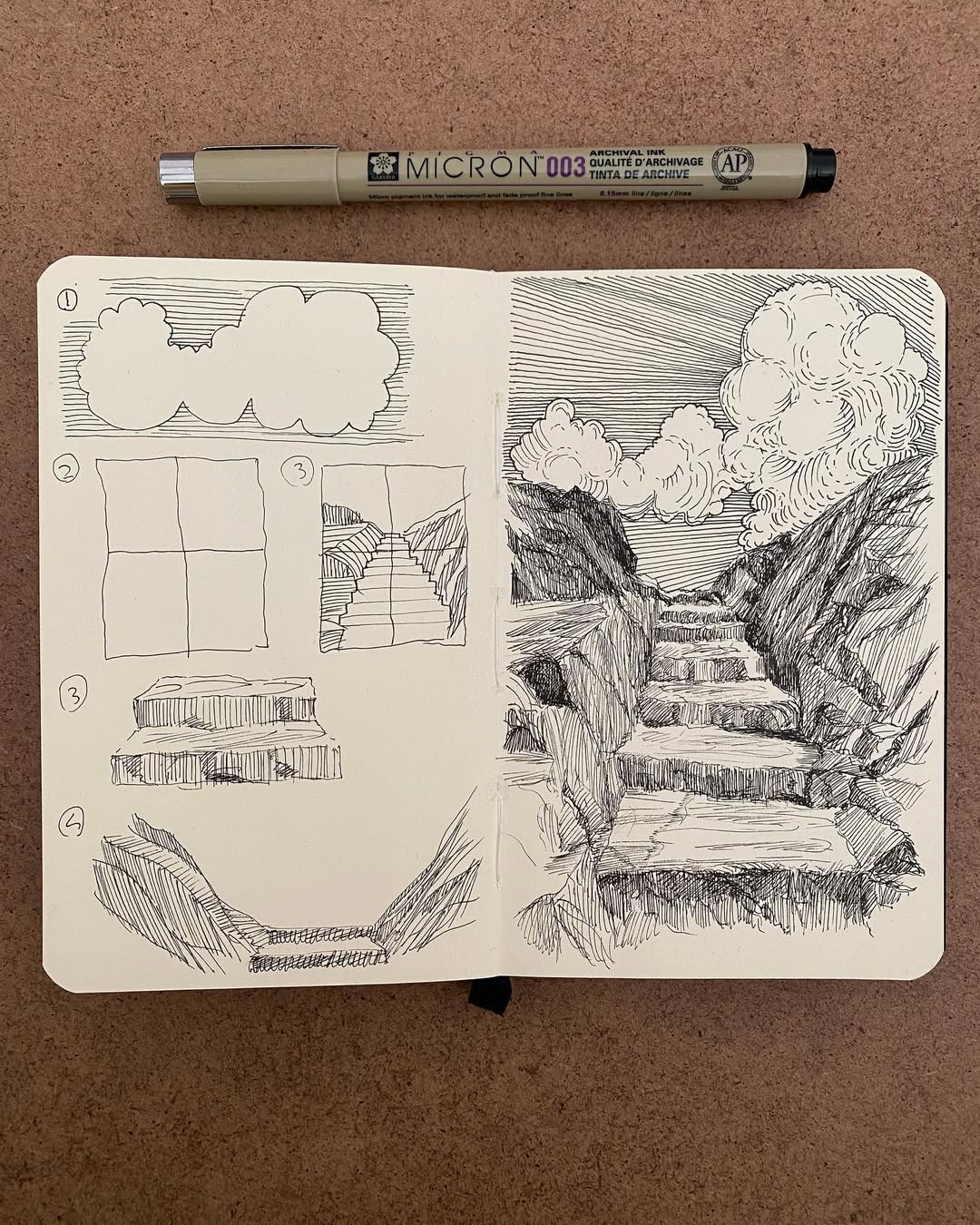
source @sketchwelat
Inspiration doesn’t always strike out of nowhere—sometimes, it comes from habit. Making sketching a daily practice, even if it’s just for five minutes, can help keep your creativity flowing. Daily sketching builds muscle memory, sharpens your observational skills, and improves your ability to translate ideas onto paper. If carrying a bulky sketchbook feels like too much, try a Field Notes Sketchbook Set, which fits perfectly in your bag or pocket. The more you draw, the more naturally ideas will flow, making it easier to overcome creative blocks.
7. Find Inspiration in Nature
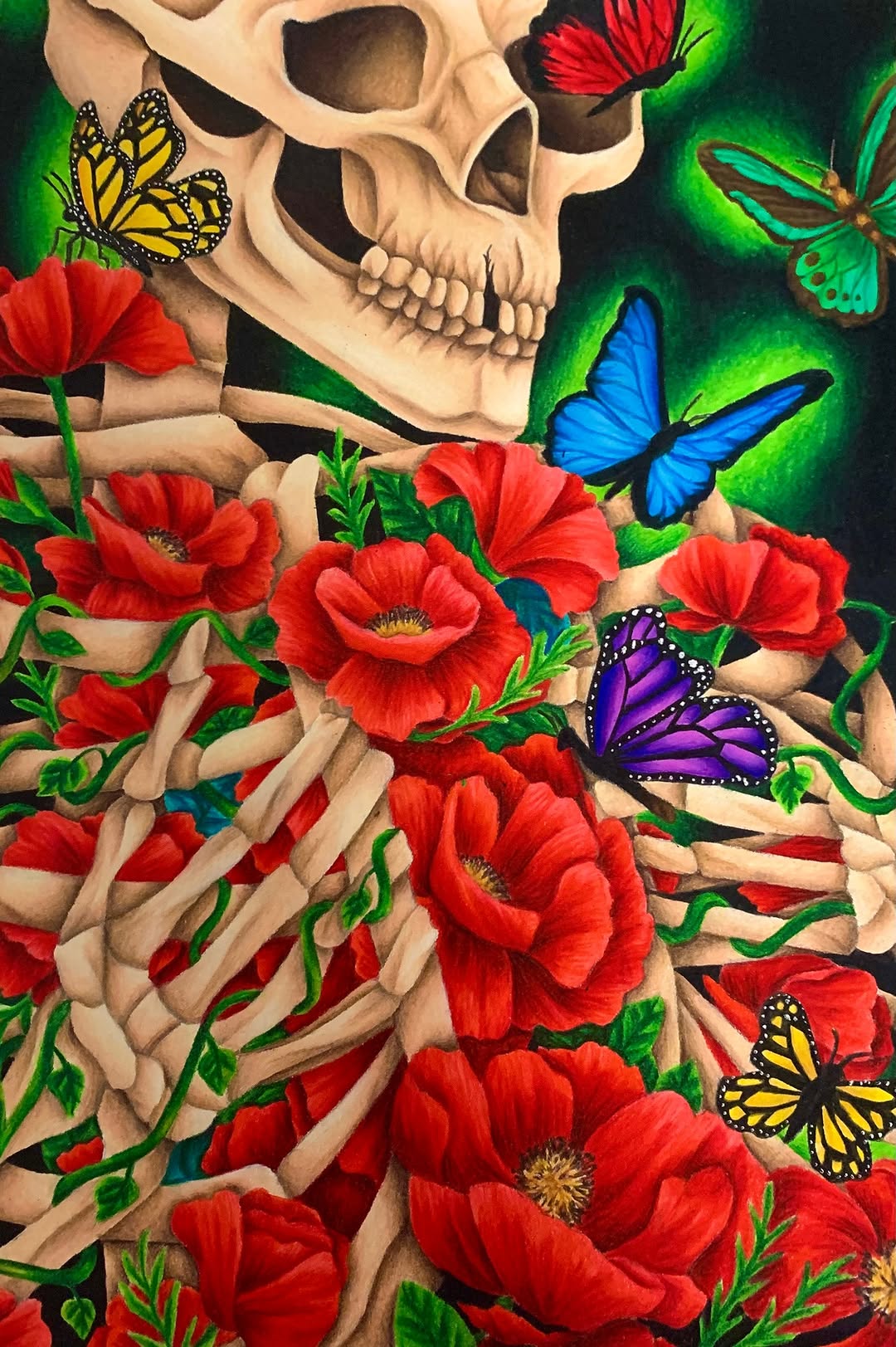
source @rmcad
Nature has always been one of the greatest muses for artists. The organic shapes, intricate details, and ever-changing colors found in landscapes, flowers, and wildlife can be incredibly inspiring. Take a break from your screen and step outside to observe how light hits the leaves, how water reflects the sky, or how shadows dance on the ground. Sketching elements from nature not only improves your observation skills but also brings a sense of calm and mindfulness to your artistic process. If you can’t go outside, bring nature indoors with houseplants or dried flowers to spark creativity.
8. Use a Lightbox for Tracing and Refining Art
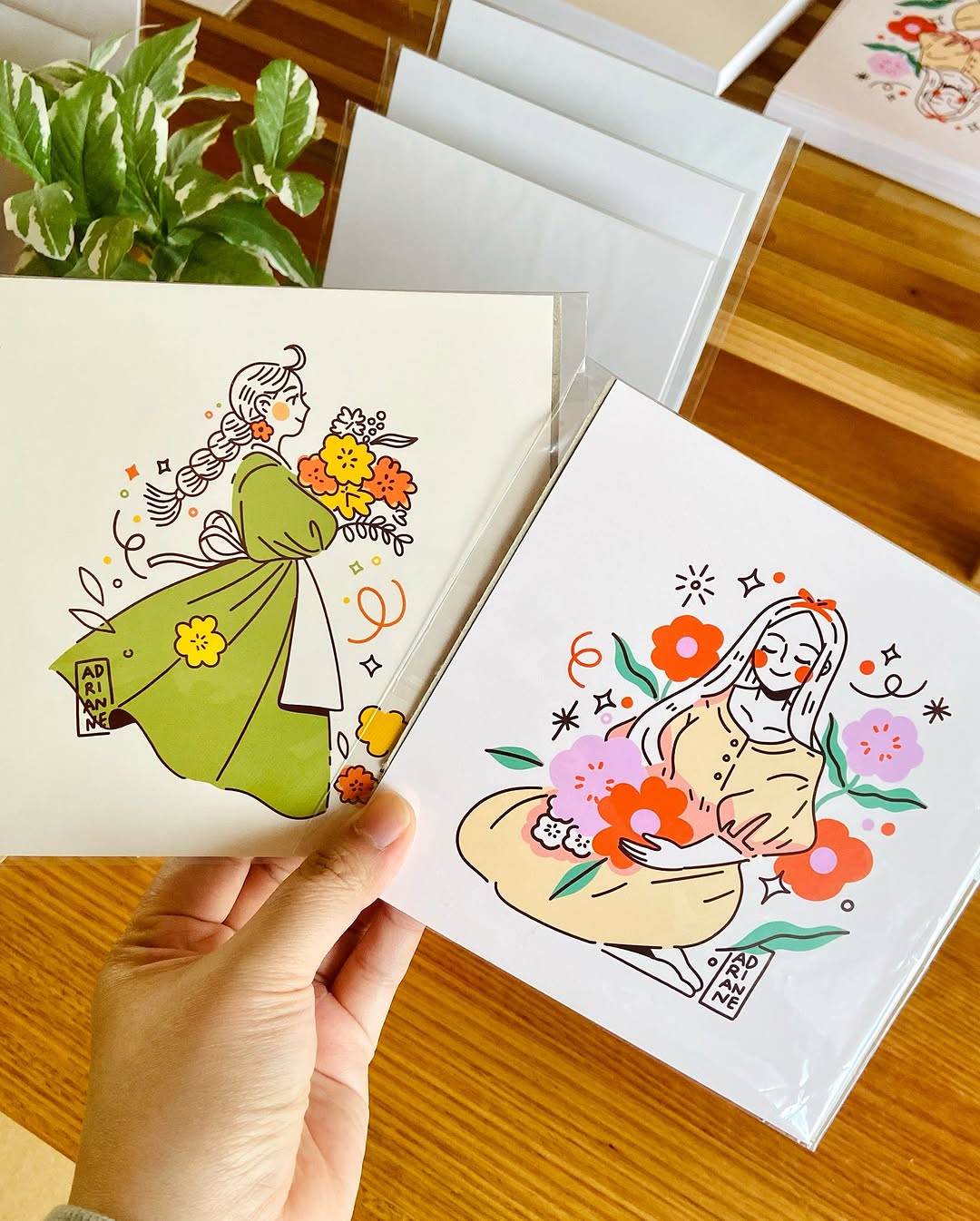
source @adriannewalujo.o
A lightbox can be a game-changer for refining your sketches and experimenting with different compositions. Whether you’re transferring rough sketches onto final paper or working on layered artwork, a LED Lightbox Tracing Board is an excellent tool to make the process smoother. Lightboxes allow you to refine your sketches without erasing too much, making them ideal for perfecting details. They’re also great for animators, calligraphers, and illustrators who need precision in their work.
9. Listen to Music or Podcasts While Drawing
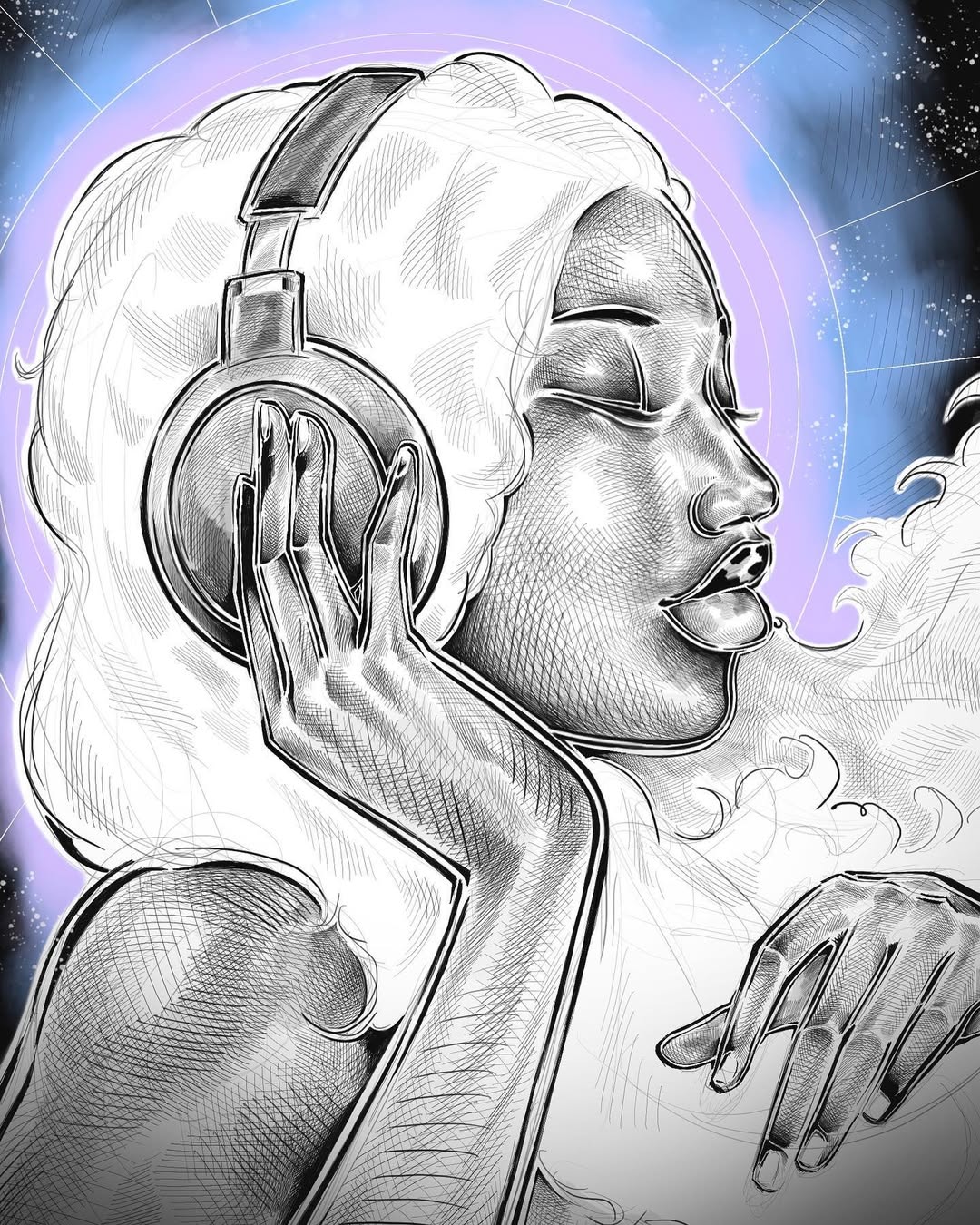
source @weightlessdrop
Sometimes, inspiration comes from sound. Listening to music, audiobooks, or art-related podcasts can create an immersive drawing experience that fuels creativity. Classical music, lo-fi beats, or even soundscapes like rain or ocean waves can help set the mood. Podcasts on creativity, storytelling, or interviews with artists can offer new perspectives and ideas while you work. Experiment with different types of audio to see what enhances your creative flow the most.
10. Experiment with Color Palettes
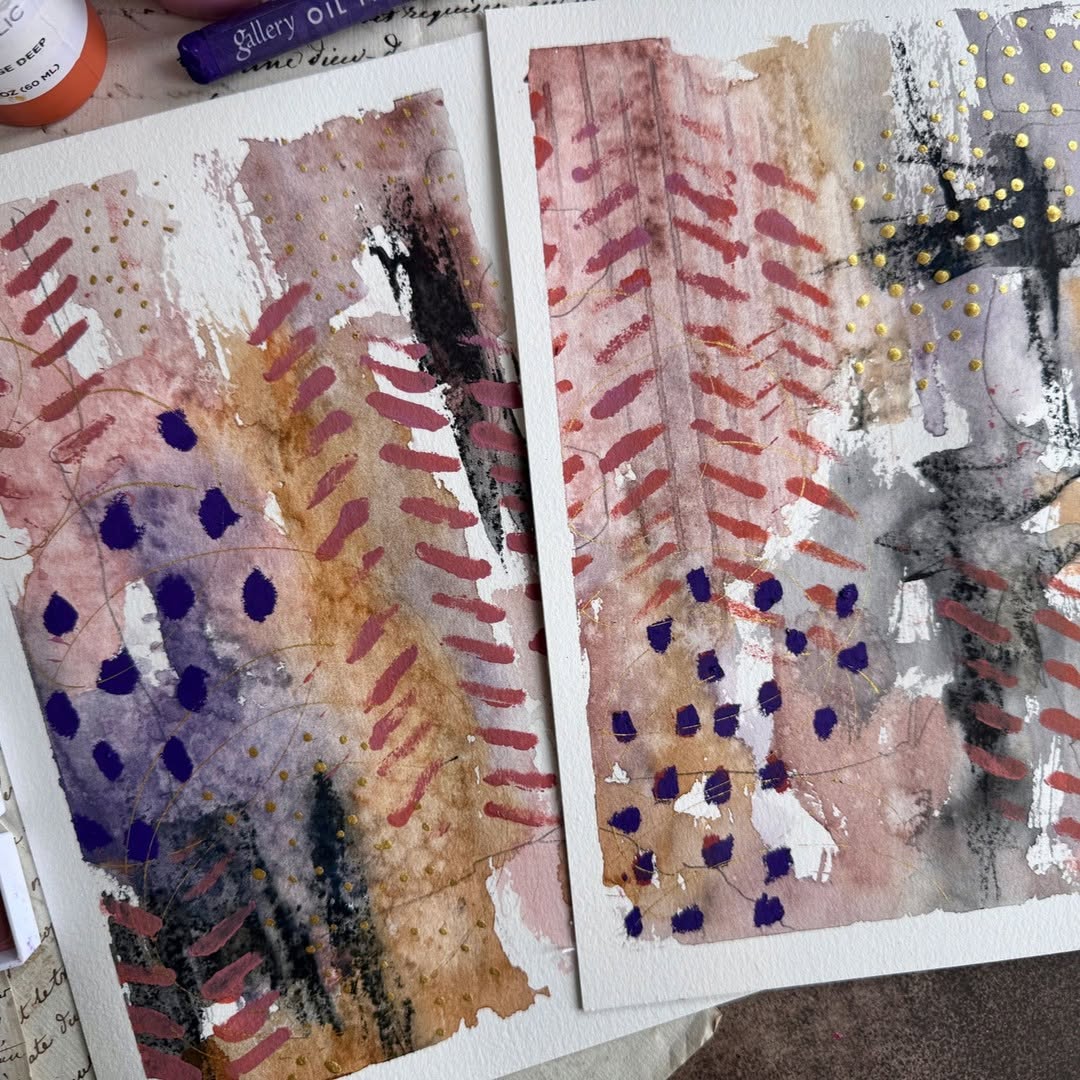
source @2lilowlsart
Color can change everything. If you’re used to drawing in black and white, challenge yourself by incorporating colors in new ways. Play with monochrome sketches, pastel hues, or vibrant shades to see how different palettes affect the mood of your art. If choosing colors feels overwhelming, online tools like Coolors can help generate aesthetic color combinations. Investing in a Copic Markers Set or watercolor palette can also encourage you to step out of your comfort zone and experiment with blending techniques.
11. Study Master Artists for Techniques
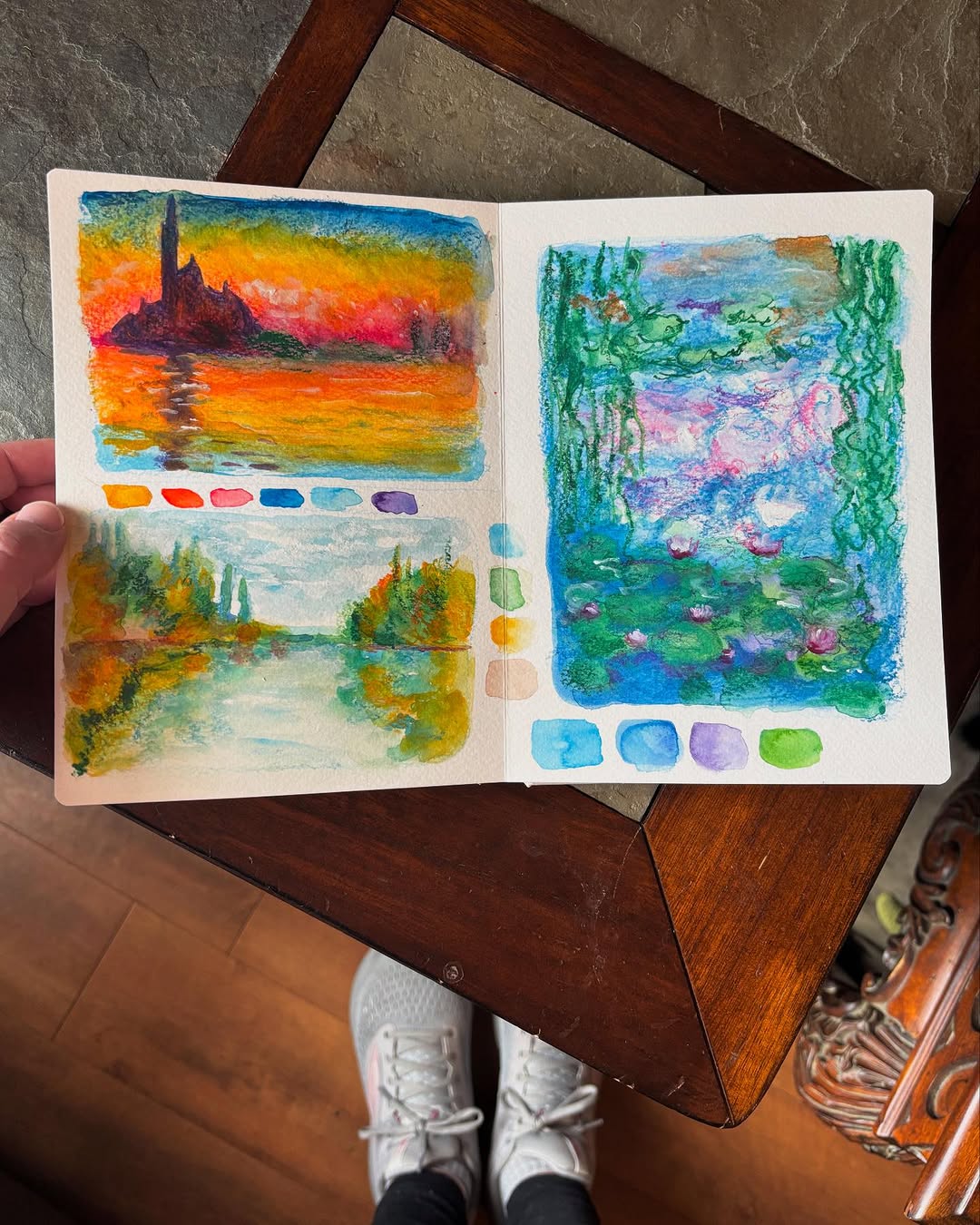
source @sarahannbrossart
Learning from history’s greatest artists can offer fresh inspiration. Analyze the brushstrokes of Van Gogh, the light and shadows of Rembrandt, or the surreal compositions of Dalí. By studying different techniques and artistic approaches, you can incorporate new elements into your own work. Try recreating a famous painting in your style or adapting a classical composition with modern techniques. Observing the works of renowned artists teaches you about composition, texture, and storytelling, all of which can elevate your drawings.
12. Join an Online Art Community
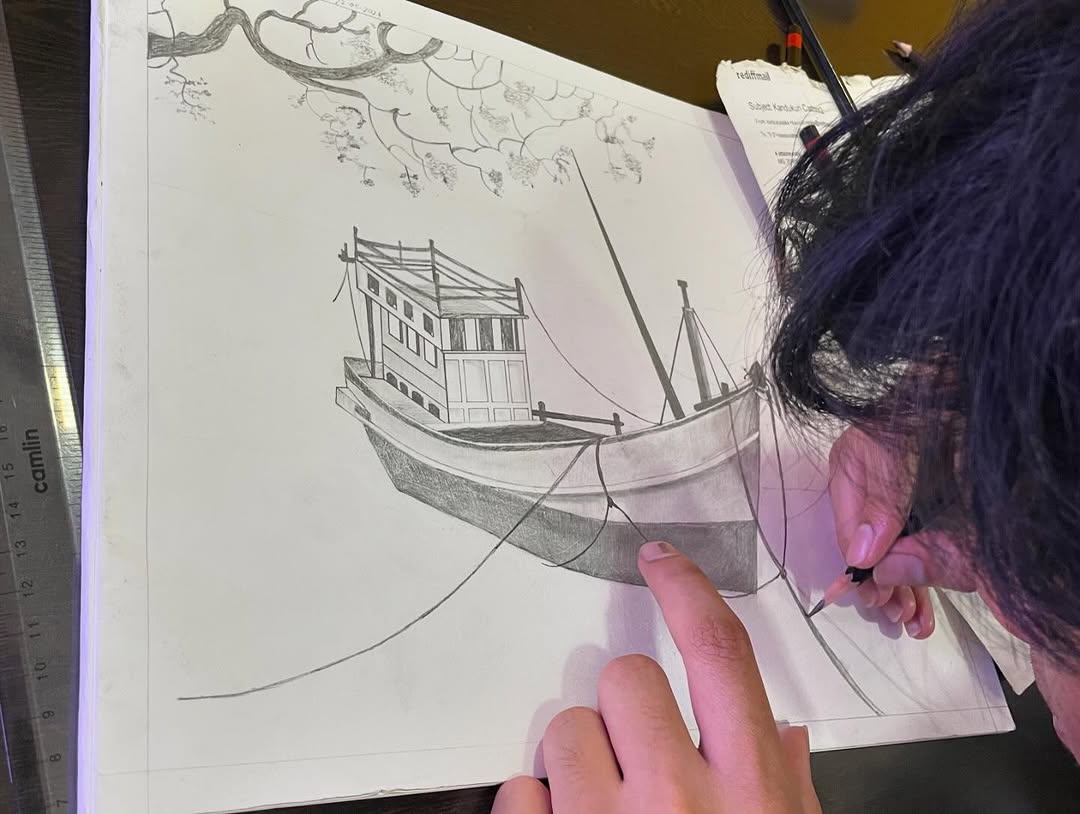
source @inspire_painting_institute
Art doesn’t have to be a solo journey. Platforms like Instagram, DeviantArt, and Reddit’s r/learnart community offer spaces where artists can share their work, get feedback, and find inspiration from others. Engaging with other artists can introduce you to new techniques and perspectives. Many online communities host challenges, critique sessions, and collaborations, making them great spaces to stay motivated and continuously grow.
13. Take Art Challenges to Push Boundaries
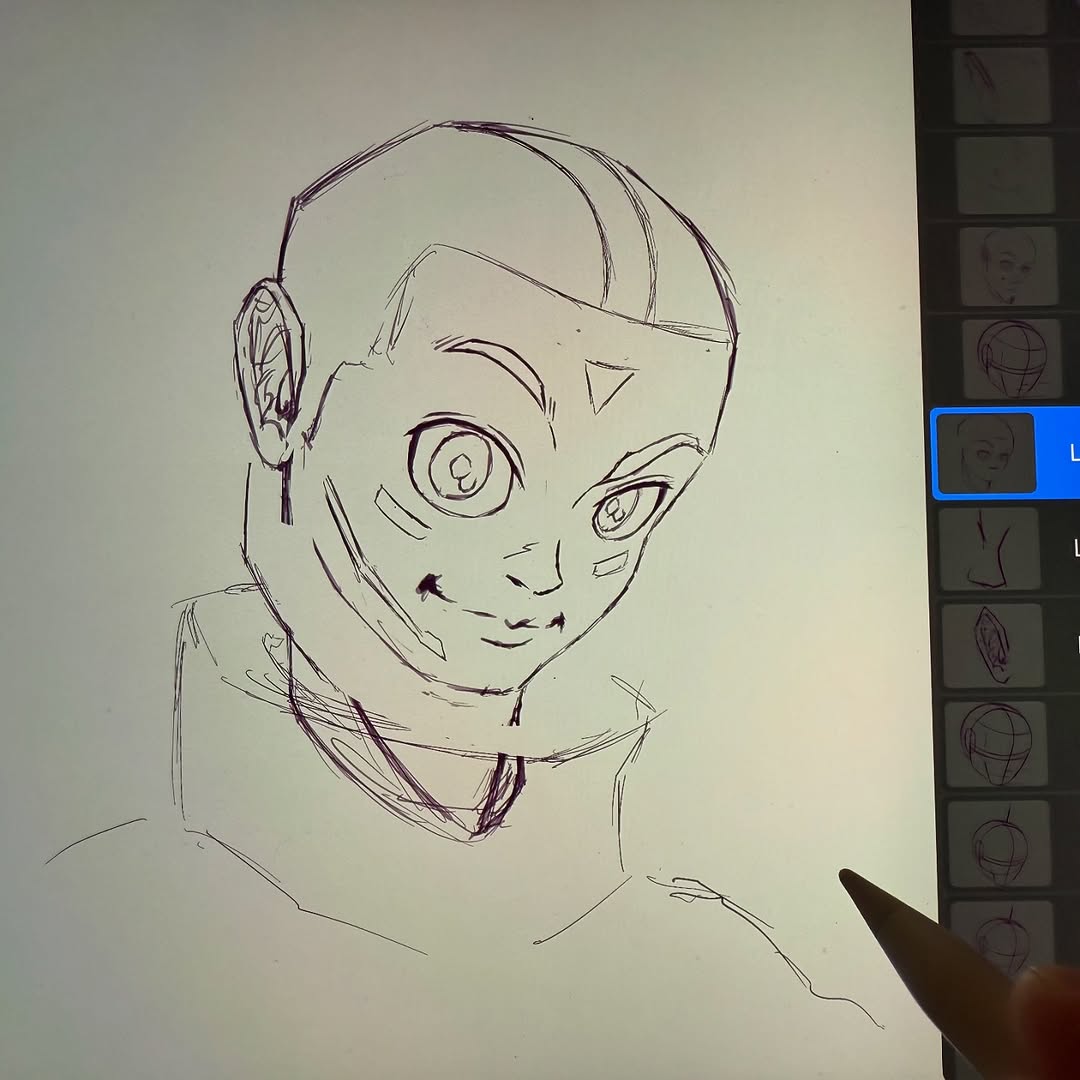
source @apocoart
Joining art challenges like Inktober, 100 Heads Challenge, or Draw This in Your Style forces you to think outside the box. These challenges often come with prompts that help guide your creativity, making them an excellent way to practice regularly. Setting goals and following structured themes can keep you accountable and push you beyond your comfort zone.
14. Try Digital Drawing for a New Medium
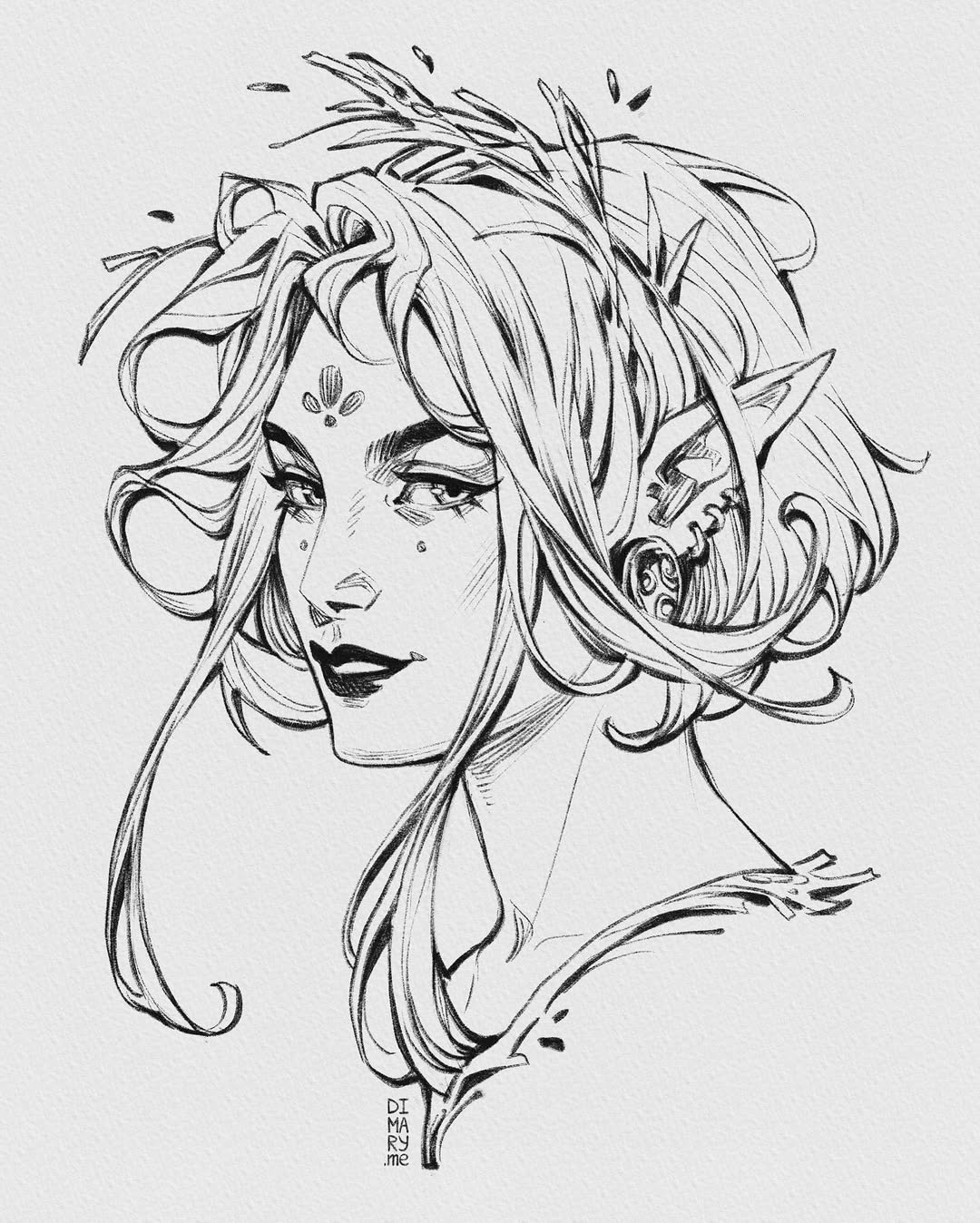
source @mary_dimary
If traditional drawing feels repetitive, consider switching things up by trying digital art. Digital tools allow for endless experimentation without the fear of ruining a piece. The Wacom Drawing Tablet is a great beginner-friendly option to explore digital illustration. With digital art, you can test different brushes, layer effects, and textures that might be difficult to achieve with traditional media. Many artists find that combining digital and traditional techniques expands their creativity.
15. Keep a Reference Folder for Ideas
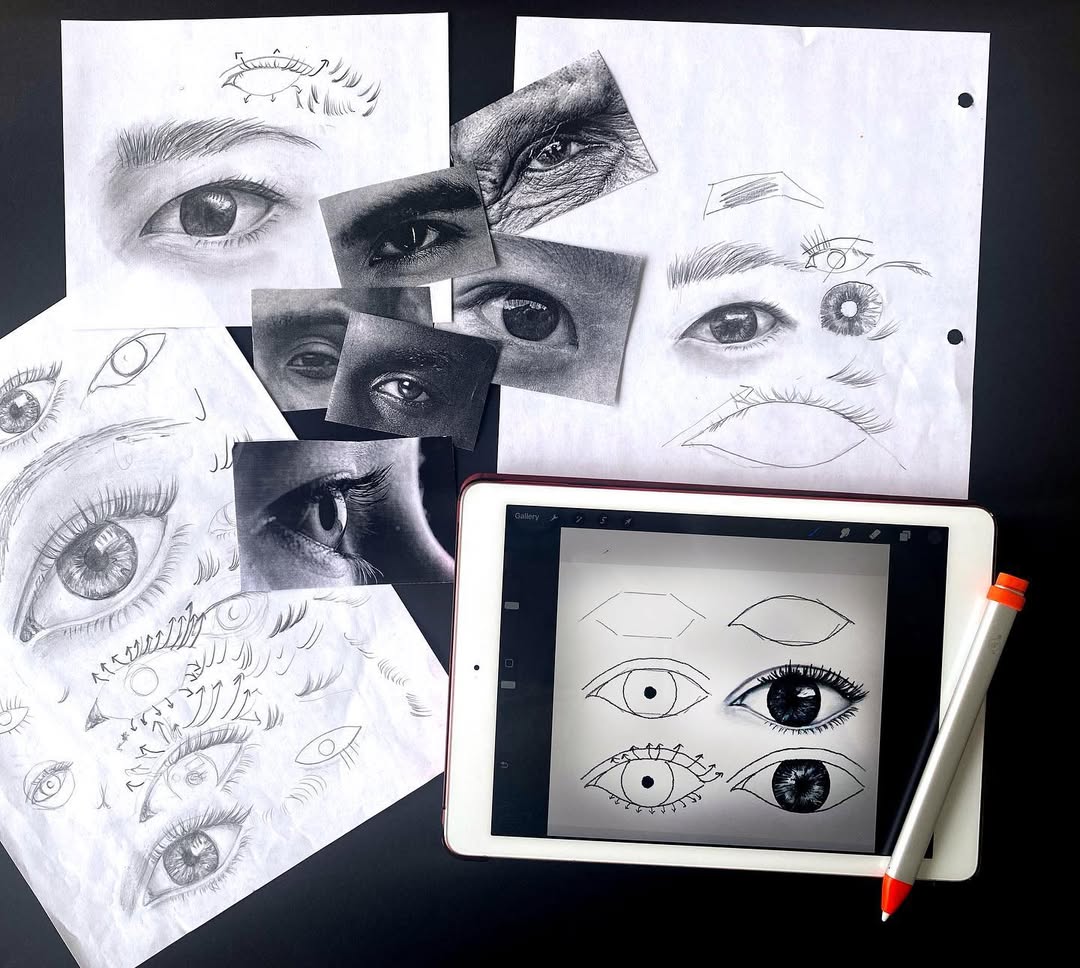
source @artfulideasclassroom
A collection of reference images can help you overcome creative blocks. Save pictures of interesting poses, unique textures, and inspiring compositions so you always have something to refer to when you need ideas. Organize your references by theme, color, or subject to make them easier to browse. Using reference images can also improve your understanding of anatomy, perspective, and proportions.
16. Use a Grid Method for Accurate Drawings
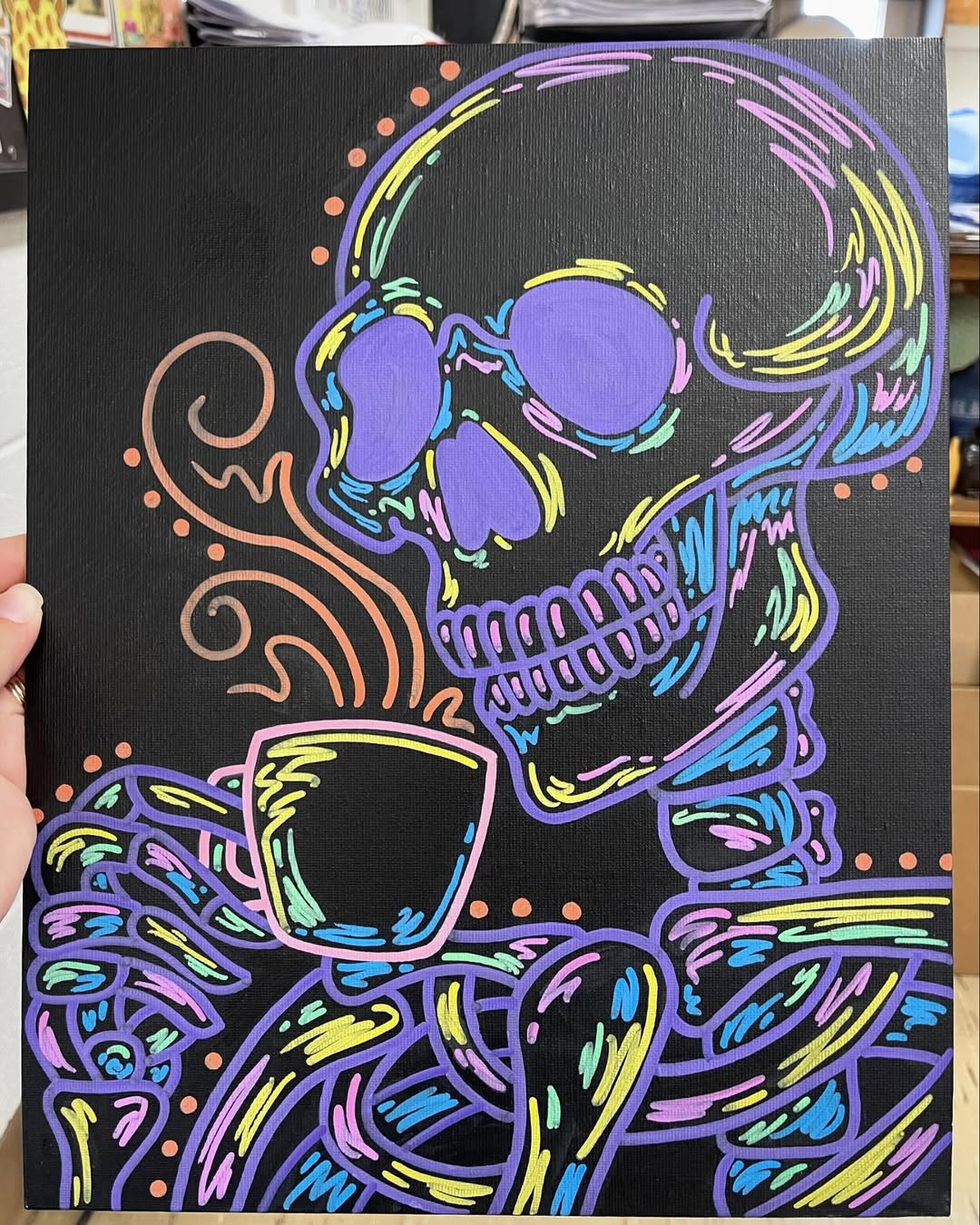
source @abbiejacobsart
Grids can help improve proportions and symmetry in your work. Whether drawing portraits or complex landscapes, using a Gridded Sketchpad makes the process easier and ensures better accuracy. Gridding is especially helpful for beginners learning how to maintain proper proportions when enlarging or transferring images.
17. Play with Different Lighting and Shadows
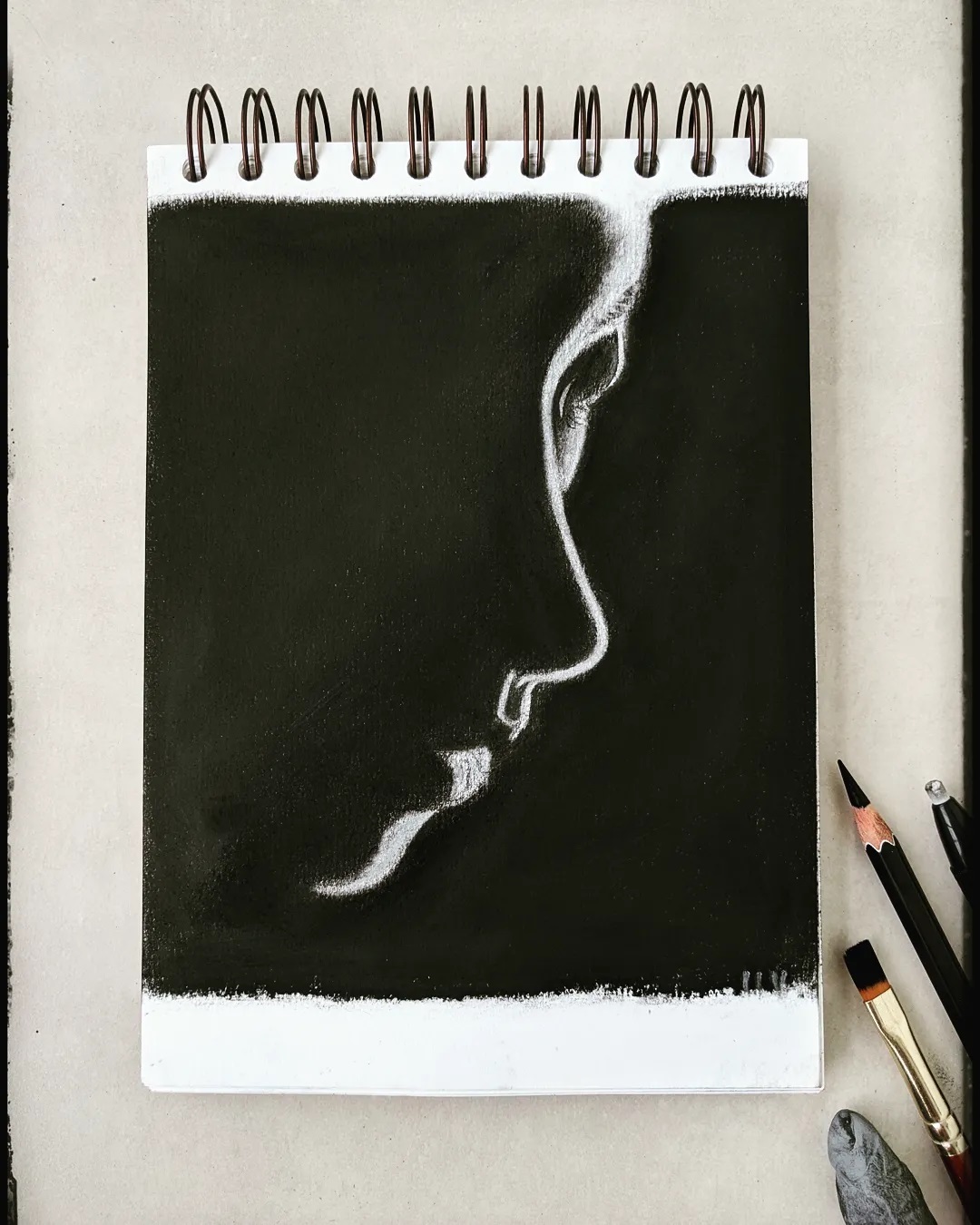
source @zindaa.dil
Understanding lighting is key to making drawings look more three-dimensional. Experiment with different light sources, whether natural sunlight or an adjustable desk lamp, to see how shadows change an object’s form. Learning how to shade effectively adds depth and realism to your art. Try sketching the same object under different lighting conditions to see how it transforms.
18. Draw from Real Life Instead of Photos
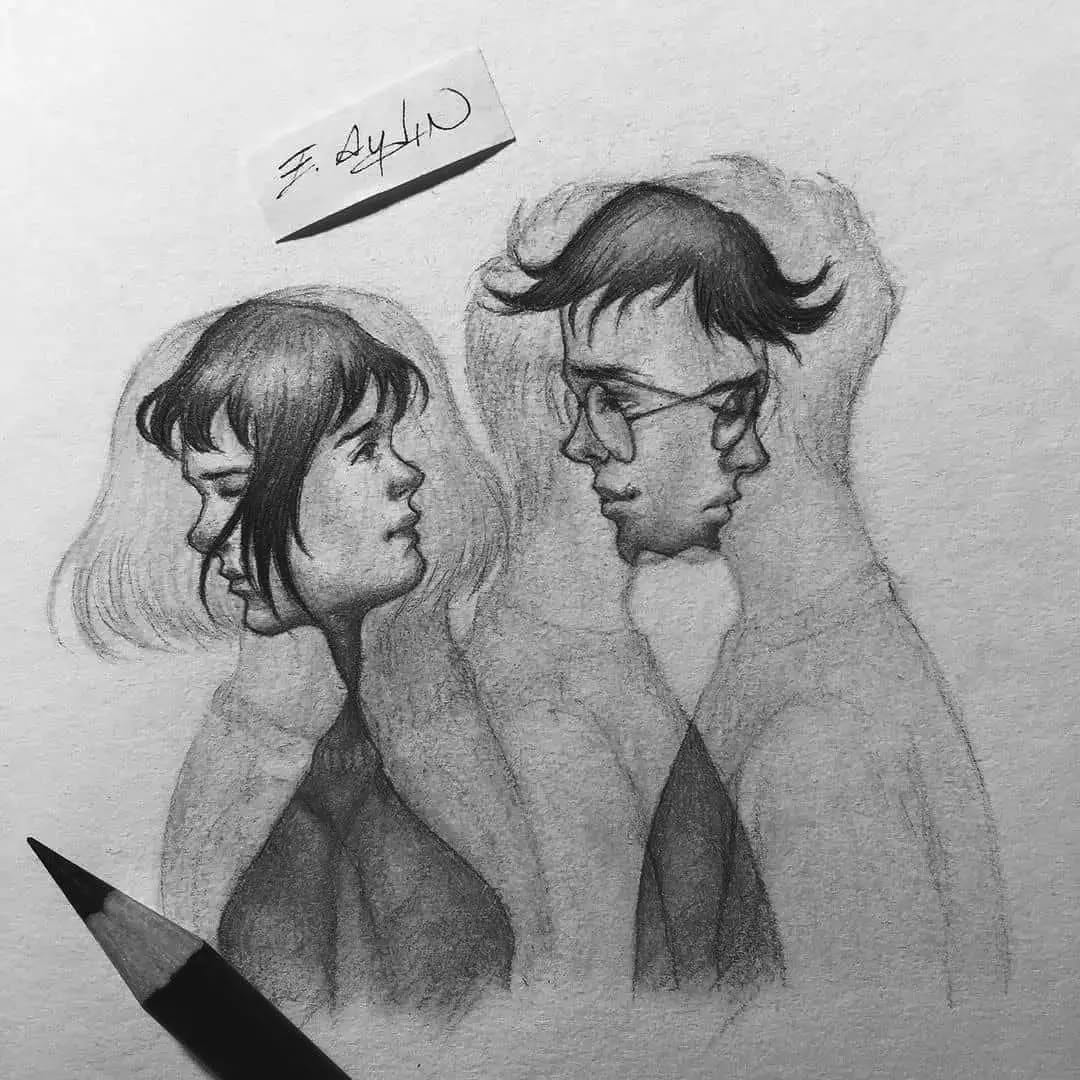
source @drawing_art_sketching
Photos are helpful, but drawing from real life sharpens your observational skills. Practice sketching people in coffee shops, objects in your home, or outdoor scenes to capture unique perspectives. Observing real-life subjects improves your ability to capture movement, depth, and detail in a way that photos sometimes flatten.
19. Keep an Idea Journal for Creative Sparks
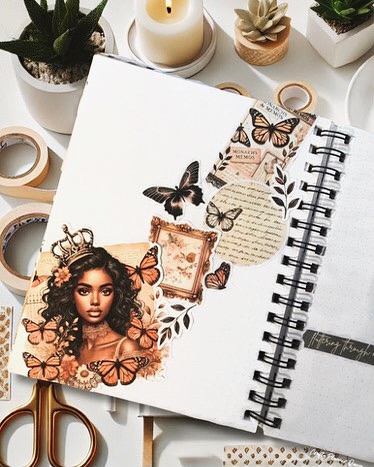
source @craftyplanner_queen
Inspiration often strikes at the most unexpected moments—while walking, reading, or even daydreaming. Keeping an idea journal specifically for art-related thoughts, concepts, and sketches can be a game-changer. Instead of losing a great idea, jot it down immediately. This journal doesn’t have to be neat or structured—it’s a creative dumping ground for your imagination. Whether you scribble quick doodles, write down intriguing color combinations, or collect interesting quotes, your journal becomes a personal source of inspiration. Having an artistic log also helps you track your progress over time, allowing you to see how your ideas evolve and expand. A leather-bound art journal or a Moleskine sketchbook makes for an excellent companion for any artist on the go.
20. Use Scented Candles or Essential Oils for Atmosphere
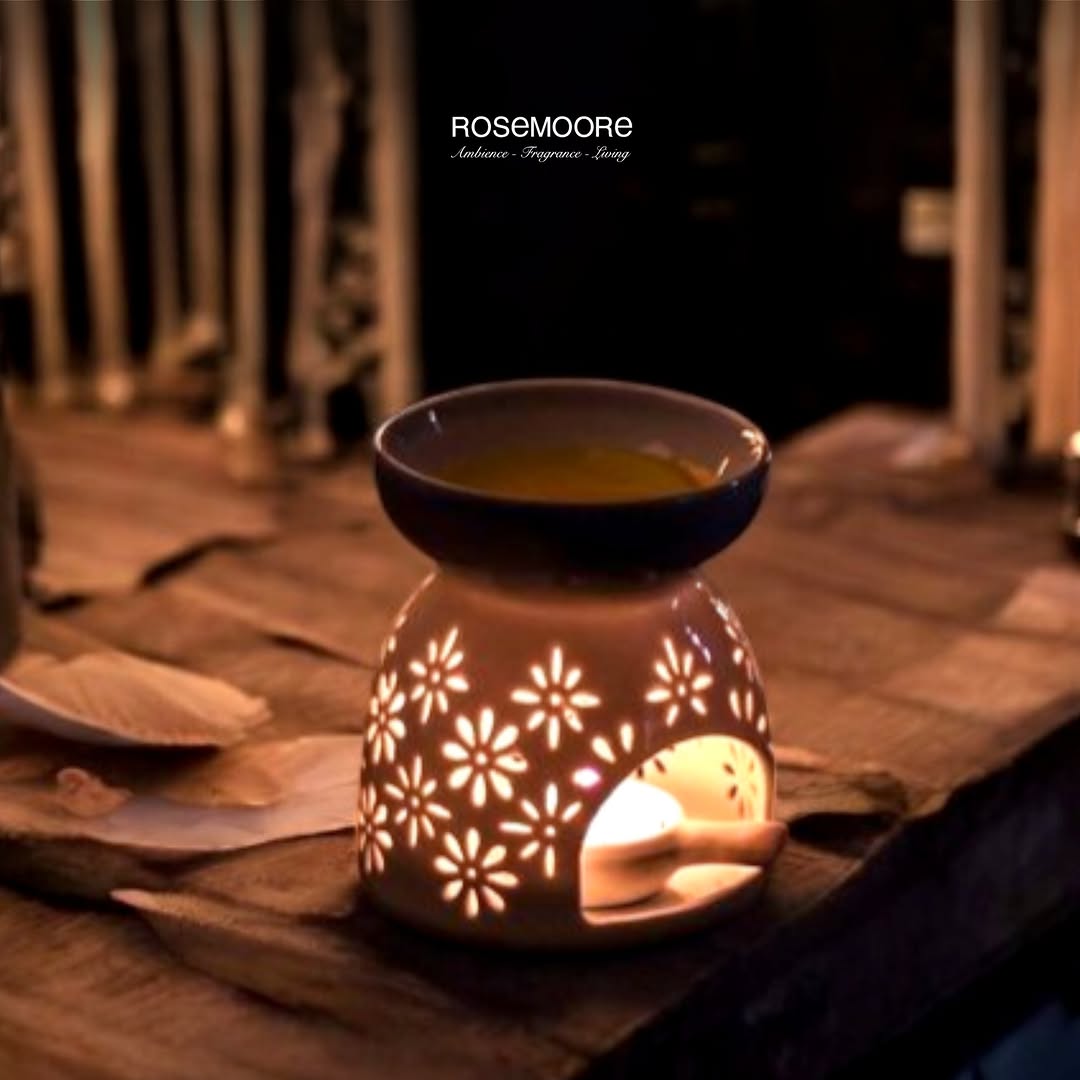
source @rosemooreindia
Your surroundings can play a huge role in your creative mindset. Ever notice how certain scents can bring back memories or shift your mood? Aromatherapy is a powerful tool for artists, as it helps create an immersive atmosphere that encourages creativity. Lavender or chamomile can promote relaxation, while citrus and peppermint can energize and refresh your mind. Lighting a scented candle or using an essential oil diffuser can help set the right ambiance for your art sessions. This small ritual can turn your drawing time into a soothing and immersive experience, allowing you to focus better and enjoy the creative process even more.
21. Have Fun and Let Go of Perfection
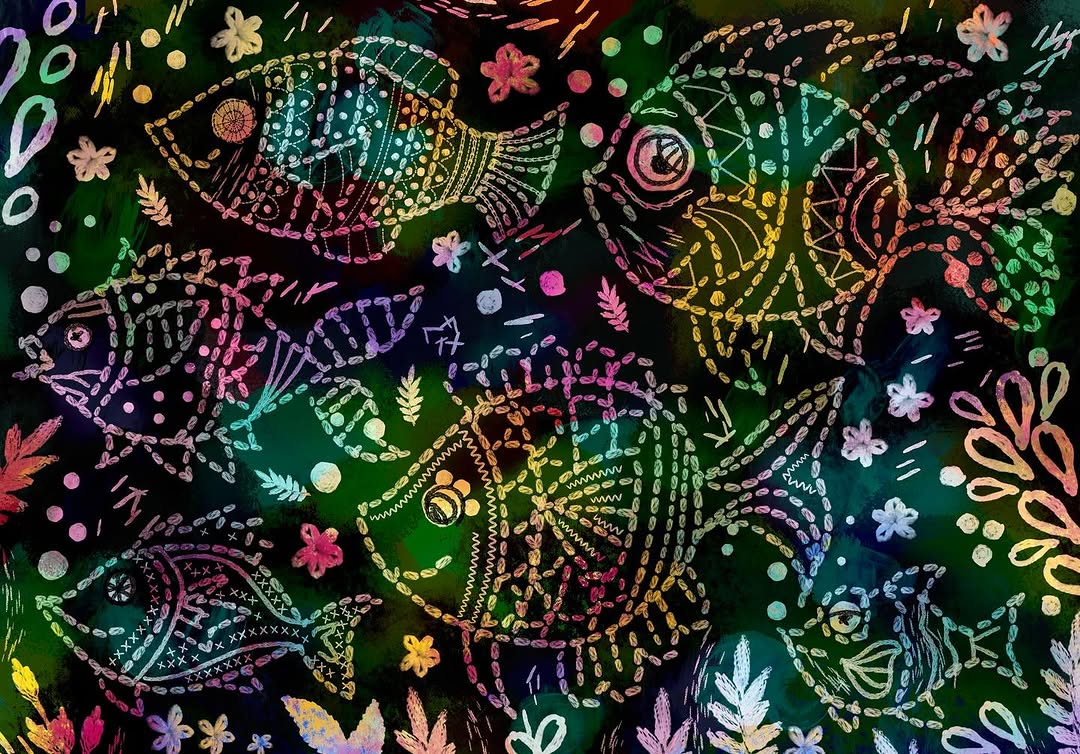
source @simani_creations
One of the biggest creative blocks artists face is the pressure to make every piece perfect. But here’s the truth—art is meant to be a journey, not a rigid outcome. Letting go of perfectionism allows you to take risks, experiment, and most importantly, have fun. Some of the best artistic discoveries happen when you allow yourself to make mistakes. Doodle freely, embrace happy accidents, and don’t be afraid to explore unconventional ideas. If something doesn’t turn out as expected, treat it as a learning experience rather than a failure. Art is about expression, growth, and enjoyment—so relax, experiment, and keep drawing

